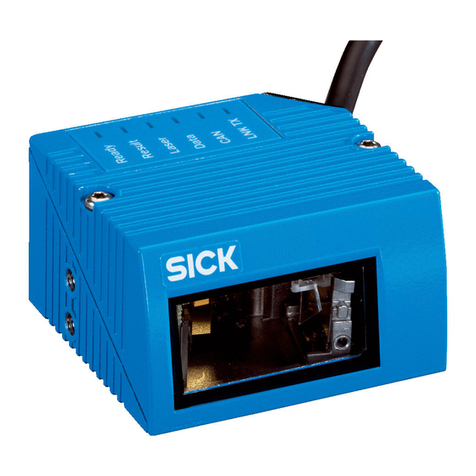Manual No. 25-NLB0045-01
Series NLB-9625/9645 Mini Laser Fixed Position Scanner
Page 1
Section 1
Introduction and Getting Started
Product Overview
The NLB-9625/9645 Series Fixed Position Scanners are miniature, 33 or 200 scans per second, laser bar code
readers designed to be easily incorporated into host equipment. Utilizing a solid state laser diode and a
brushless motor results in a minimum of wear on parts and high performance. The scanner is encased in a
rugged steel enclosure to assure durability and reliability.
Advanced 16-bit microprocessor technology coupled with Opticons proven decoding algorithms result in
superior accuracy. The scanners are fully programmable allowing the user to customize parameters including
changing communication settings, selecting symbologies, adding prefixes and appending suffixes.
Programmable settings can be downloaded from the host CPU or computer directly to the scanner.
NLB 9625/9645 Series laser scanners are encased in compact, rugged steel enclosures. The compact size
permits installation in the tightest areas. Scanners are available in both front and side view configurations
allowing great flexibility in mounting and positioning the scanner for optimum performance.
Quick Start-Up Procedure
This section is for those who wish to start using the scanner before reading the complete manual. In only a few
steps the scanner will be operable.
1) Turn off the power to your PC and connect the scanner to an RS232 communications port. Note: You must
provide +5 Volt DC power to the scanner. This can be accomplished using the power supply and patch cable
available from Opticon. Turn on the power to the PC.
2) Using communications software (e.g., Procom), set the communication parameters: 9600 baud, 1 Start /
Stop Bit, 8 Data Bits, No Parity, No Handshaking, No Flow Control.
3) If you are operating in a Microsoft Windows 3.1 environment, skip to Step 5.
4) If you are operating in a Microsoft Windows 95 environment, you can set the communication
parameters using Hyper Terminal as follows:
♦Open Hyper Terminal. This can be done from Start→Programs→Accessories
♦Select Hypertrm.exe to create a New Connection.
♦In the Connection Description dialog screen enter a name for the new file. If desired, select an
Icon. Click OK.
♦In the Phone Number dialog screen, in the box entitled: Connect using. select the communication
port, for example, Direct to Com 1. Click OK.
♦In the Com 1 Properties screen, enter the appropriate Port Settings:
Bits per second = 9600
Data bits = 8
Parity = None
Stop Character = 1
Handshaking = None
Click OK.
♦The HyperTerminal folder you just created will open. From the File pull-down menu, select
Properties, then click on the Setting Tab.



























